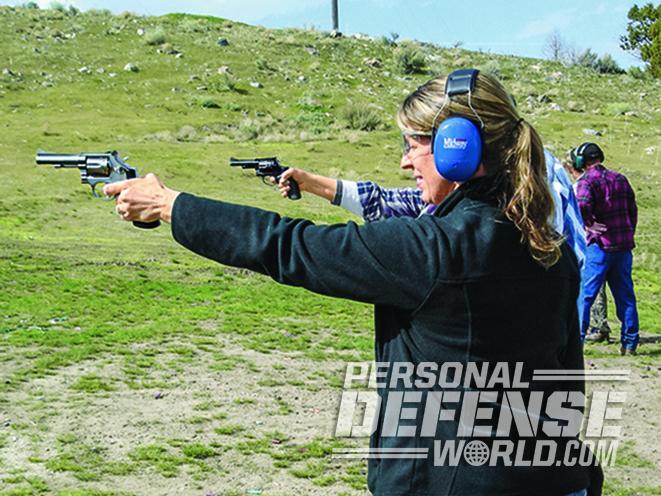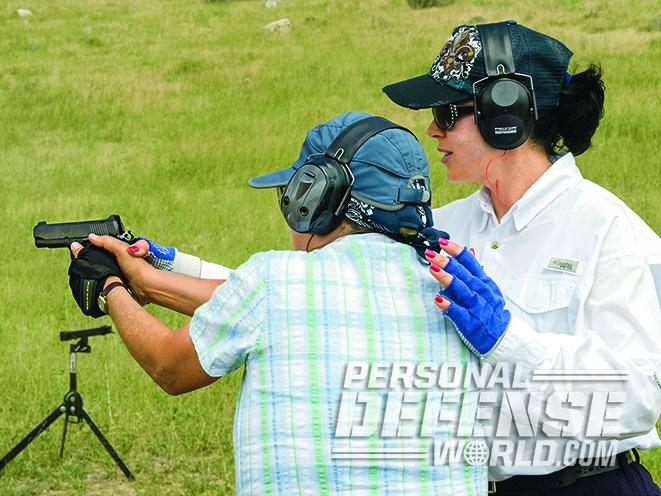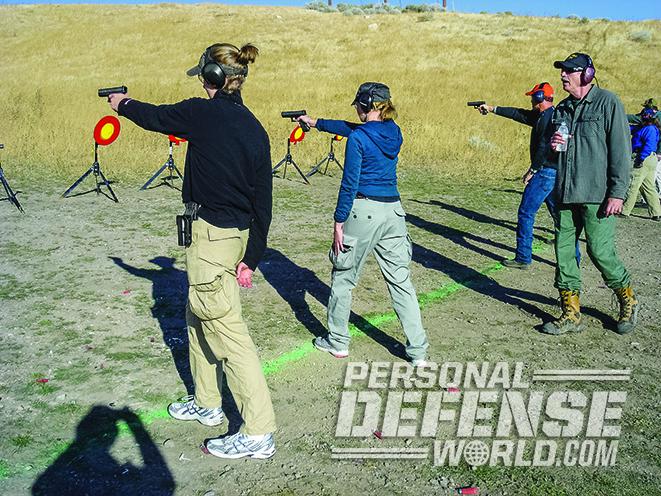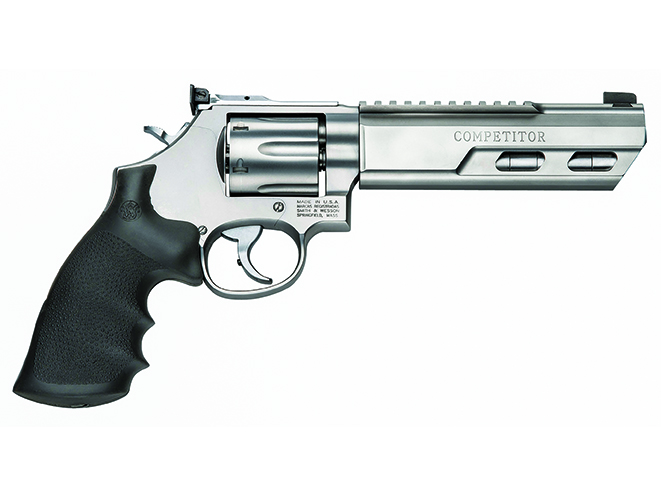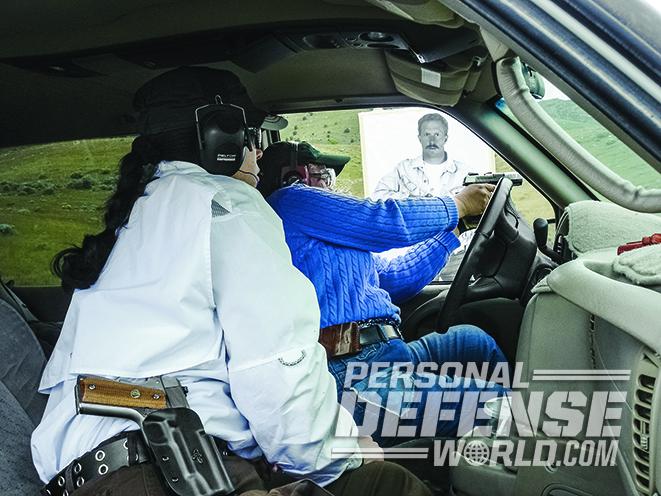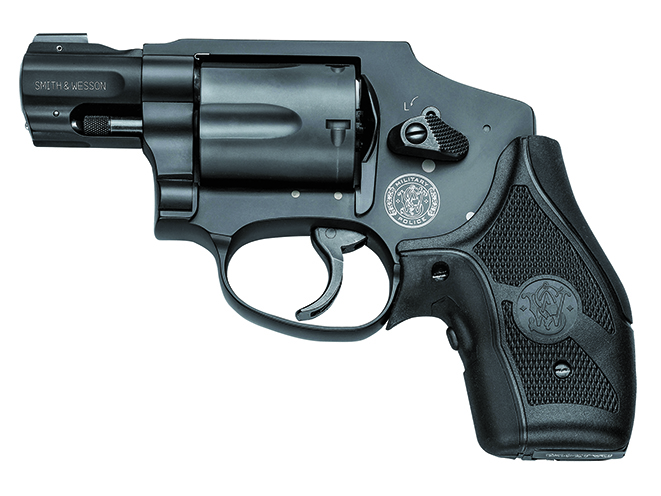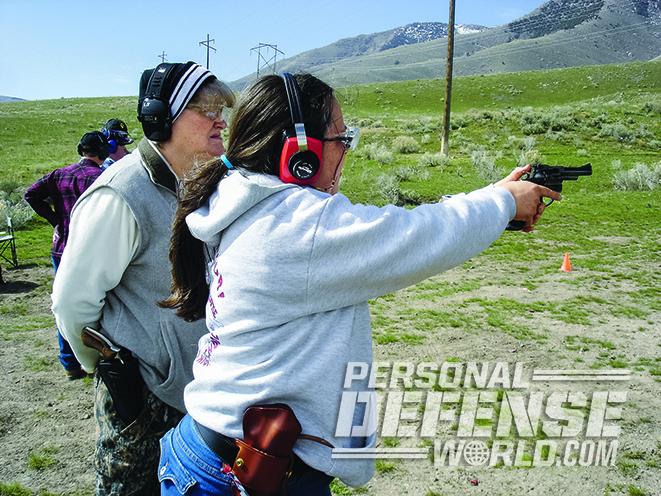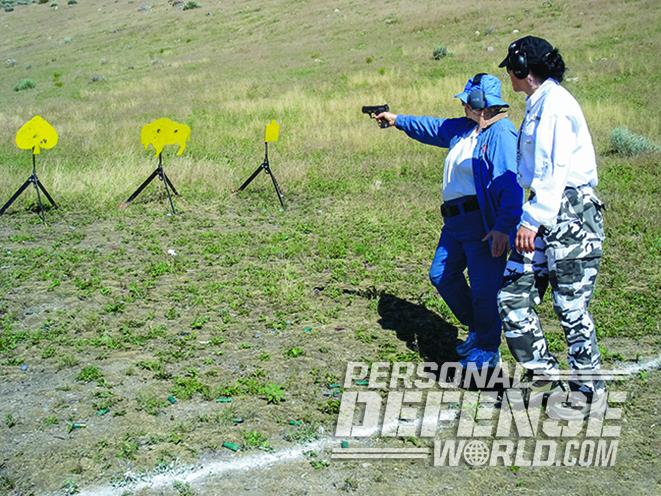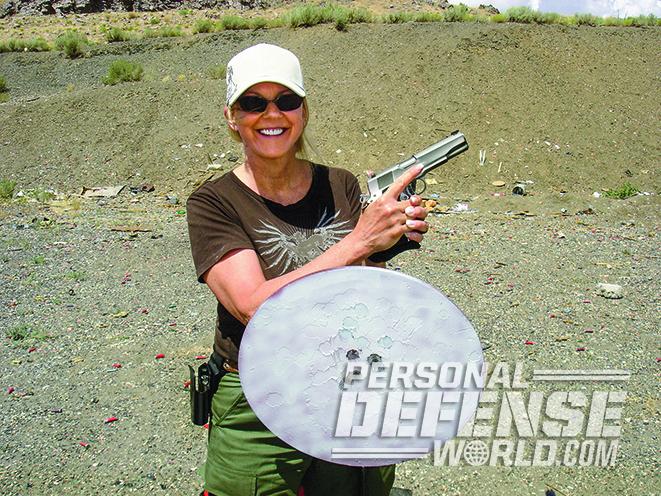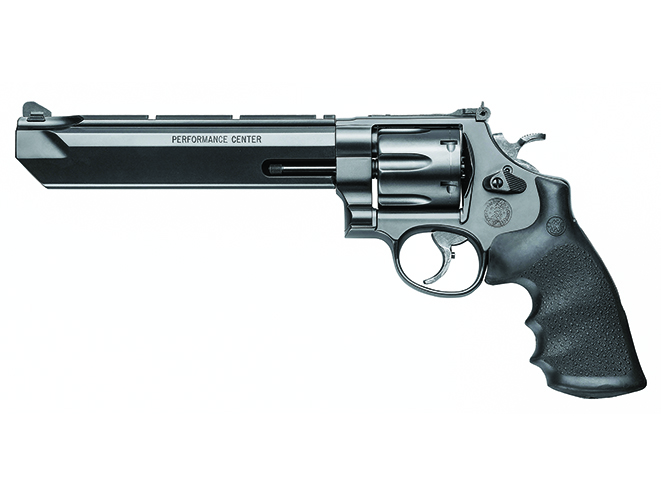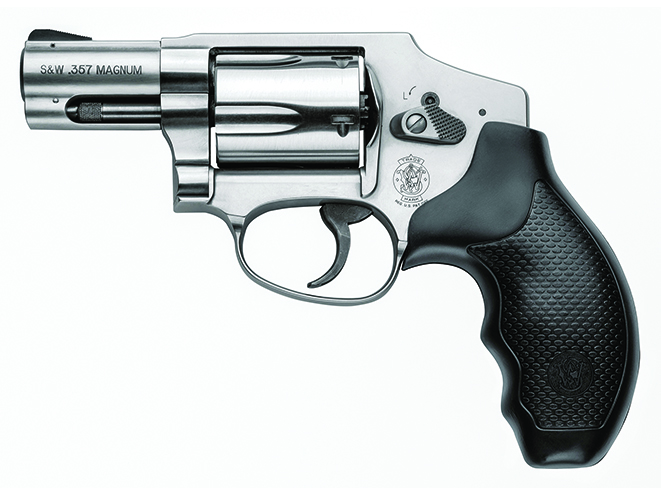By: Stacey Mudgett
One of the most common mistakes that I believe my students make when selecting their first handgun is to purchase a compact or subcompact pistol or revolver. New shooters are often attracted to small pistols because they mistakenly assume that small handguns will be easier to shoot. In my experience, women are more likely to make this error.
Women are sometimes encouraged to purchase a small handgun by a well- meaning friend or relative. Husbands often select a small handgun for their spouses. I have witnessed sales personnel suggesting compact revolvers to women who were purchasing their first handguns. Many people apparently believe that ladies should have a “dainty” pistol. Perhaps it is incorrectly assumed that women cannot hold a larger handgun steady enough to shoot well. My clients, however, prove otherwise in every class I teach.
Advertisement — Continue Reading Below
At times it seems that the firearms industry in general is pushing women toward smaller handguns. Several firearm manufacturers produce small, compact pistols and revolvers finished in so-called “feminine” colors, such as pink or purple. Rarely do I see full-sized pistols in such colors. Only yesterday a young woman said to me, “My husband has several guns, but I want to get my own, one of those little pink revolvers.” Such thinking is no doubt encouraged by the fact that women are often pictured in firearms periodicals holding or shooting small, compact, brightly colored handguns.

On rare occasions a client will obtain a small, compact handgun for participation in a defensive pistol course. The results can be frustrating. Last year, one of my students started her class with a subcompact .45 ACP pistol. Within three hours, she was done. Her hands were hurting and the discomfort was causing her to anticipate the recoil and push the pistol as she pressed the trigger. She returned to a subsequent class armed with a full-sized Glock pistol and learned to be a competent defensive shooter. I have seen this sequence of events occur several times.
- RELATED STORY: 6 Items in Champion Shooter Doug Koenig’s Range Bag
Another time, one of my clients brought two revolvers to class. One was a small-frame .38 Special with a 2-inch barrel. The other was a medium-frame .38 Special with a 4-inch barrel. She was inclined to participate with the smaller gun. She assumed that the smaller gun would be the better choice because it was lighter, and she believed that it would be easier to shoot. She was quite surprised when I explained to her that the smaller revolver would be much more difficult to shoot well. She successfully completed the course with the larger revolver. Subsequently, she attended our subcompact pistol course with her small revolver and was immediately aware of how much more difficult it was to shoot. Only then did she fully appreciate my recommendation that she learn the fundamentals with a larger handgun.
Advertisement — Continue Reading Below
Going Big

In my opinion, a full-size handgun should be selected for learning and practicing, and they can also be very useful for defense. A full-size handgun will achieve higher velocities and more energy than a compact pistol in the same caliber due to the longer barrel, which will burn the powder more efficiently and allow less muzzle flash. The weight and hand-filling grip frame of the larger pistol will reduce the felt recoil and improve control of the weapon, allowing the shooter to fire accurate follow-up shots more quickly.
Full-sized pistols usually have larger cartridge capacities than their compact counterparts. Full-sized pistols are more often available with tritium night sights and a rail for mounting an illuminating light. Both of these accessories may be desirable in a home-defense situation.
Advertisement — Continue Reading Below
Concealing a handgun in a bedside lock box or the center console of one’s automobile does not necessitate a tiny pistol. A larger and more efficient pistol will work best for all situations that do not require maximum concealment.
Small Defenders

Of course, compact pistols and revolvers do fulfill a need. Small handguns are designed for concealed carry and should be reserved for that purpose. When concealing a full-sized pistol is not practical, a trained shooter may be well served by a smaller version of his or her full-sized weapon.
Advertisement — Continue Reading Below
- RELATED STORY: Miller Time – Q&A with Pro Shooter Heather Miller
Most of my female clients find it difficult to conceal a full-sized pistol on a daily basis. Many of them carry a small-frame .38 Special. The revolver has the advantage of being more likely to function properly if fired from inside a coat pocket and can be expected to fire in a muzzle-contact situation. Both of these scenarios are problematic for autopistols.
The Sig Sauer P238 is also very popular with my students. This small pistol has excellent tritium sights, a good trigger and weighs less than a pound. All pistols with a manual safety require specific training to operate properly. After plenty of training to make running the P238 instinctual, this pistol serves many of my clients well. While slightly less powerful than the .38 Special, this .380 ACP holds additional cartridges, and with a spare magazine it can be reloaded more quickly than the revolver. The small, flat magazine for this pistol is easy to conceal, which encourages carrying spare ammunition.
Personal Carry
Advertisement — Continue Reading Below

All of my students who carry a small pistol on a routine basis learned how to shoot and defend themselves using a full-size handgun. The smaller handgun is their “go-to” choice for concealed carry when compactness is an advantage. They understand the proper role of both full-sized and compact handguns.
Trying to select one tool to perform all tasks is not going to work well. This is true if you are building a house, repairing an automobile or defending yourself with a firearm. If you can only afford one handgun, it should be a full-sized pistol or revolver. If you have no intention of carrying concealed, you do not need a compact handgun. If you intend to carry concealed, you need a full-sized pistol first. The compact pistol should be your second acquisition.
When I conduct consultations with clients to help them select their first handgun, I check the size of their hand. I find that most women can in fact obtain a proper firing grip with a double-stack pistol such as a Glock 17. Female police officers of the Los Angeles Police Department, and hundreds of other agencies, carry and qualify with these pistols every day. However, if a shooter has unusually small hands, I will recommend a full-sized pistol that uses a single-stack magazine and has a narrower grip frame.
Advertisement — Continue Reading Below
- RELATED STORY: Big Gun, Will Carry – How To Conceal Full-Size Handguns
My advice to new shooters who intend to carry concealed on a daily basis is to purchase a full-sized pistol for training, home defense, carrying in a vehicle, open carry and concealed carry when doing so is practical and lawful. Once shooters have acquired good marksmanship and manipulation skills with their full-sized pistols, they should be ready to start training with a more concealable weapon.
I am often asked by my male clients, “What handgun should I buy for my wife?” My answer is always the same: “You should not buy her anything.
Help her to obtain professional instruction and then she can select and purchase her own handgun. Having done so, she will be a much more interested, motivated, safe and competent shooter. Shooting will cease to be something that she is doing to accommodate you and become something that she is doing for herself.”
Advertisement — Continue Reading Below
Pro Training

I suggest that all shooters obtain professional training. I would no sooner try to teach myself the art of defensive shooting than I would try to teach myself how to fly an airplane, scuba or skydive. You might teach yourself to do these properly and safely, but the odds are against success. Nearly all firearm accidents involve shooters who have not received professional instruction. Everyone thinks that they know how to safely operate and defend themselves with a firearm until they attend professional training and discover how much they do not know.
A competent instructor is the person most likely to help a new shooter select the appropriate handgun to meet his or her specific needs. I sometimes spend several hours with a client in order to make a handgun recommendation. If an instructor suggests a subcompact pistol or revolver for your first handgun, you may want to look elsewhere for another instructor. Remember that a firearm is simply a tool. Selecting the proper tool is the first step in learning how to safely operate and shoot a handgun. A full-size handgun is in fact a much better choice for a new shooter, and ladies are no exception to the rule.
Advertisement — Continue Reading Below
About The Author: Stacey Mudgett served nearly 11 years as a Los Angeles police officer until moving to Utah in 2006. Principally assigned to uniform patrol in South Central Los Angeles, she was a member of the Urban Police Rifle Cadre and the Tactical Slug Shotgun Cadre. She is an accomplished competitive shooter and has trained law enforcement officers and civilians in several states for the past 10 years. Stacey and her husband, Larry Mudgett, teach defensive firearms training courses in Utah. For more information, call 801-669-1886 or visit marksmanshipmatters.com.
This article was originally published in ‘Personal & Home Defense’ #187. For information on how to subscribe, please email subscriptions@
